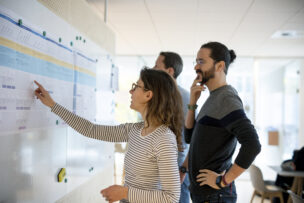Are you developing new business ideas or service improvements for your organisation? Then you know how much time and money you can spend on development. And not without risk, popular statistics claim that between 75-95% of new business ideas fail. The reason being ‘no market need’. Still, organizations launch new offerings all the time, only to find out that nobody actually needs them. For this reason, it’s key to validate your ideas through concept testing with the actual users so you can focus on the problems worth solving. If you want to learn how to validate your idea’s before spending all your budget, this blog is for you.
what is concept testing?
At Essense, we put a lot of effort in understanding user needs by applying different research types. However, people may say one thing in an interview, but behave differently in reality. How to overcome this and validate your ideas? Enter concept testing!
The core principle of concept testing is that everything you think you know about your business idea is just an assumption. Some of these assumptions carry a high risk: there is little to no evidence that they are true, but will kill your concept if they are false. It is therefore key to (in)validate these assumptions before pouring too much time and resources into it. Validating your concept with experiments will help you to determine if you are on the right track based on evidence rather than gut feeling. This will ‘de-risk’ your development process, help to get stakeholders on board and prevent waste in the long run.
when to start testing and validating concepts?
Regardless of your concept and where you are in the process, you will have some assumptions that can be put to the test.
At the start, it is important to find the right ‘customer – problem fit’. You can investigate what problems and needs exist among your target group and how relevant they are to them. Early results can help to get buy-in from stakeholders to continue exploring and allaying any initial concerns.
The next step is about verifying the ‘problem-solution fit’. Arguably, every problem can be solved in many different solutions. But like Goldilocks, your intended users want to have it “just right”. By testing multiple competing concepts you can prioritize and prevent additional waste through opportunity costs.
When moving into the stage of execution and optimization, it is key to learn with strong evidence whether the solution is a viable way to achieve your business goals, thus testing the ‘product-market fit’.
As a rule of thumb, test “quick and dirty” in the beginning (e.g. through surveys or sketches) and only move to more elaborate tests when evidence supports the direction you are heading into (a clickable prototype or even an MVP). Following this process, the level of abstraction of your idea is decreasing while simultaneously reducing the risk that goes along
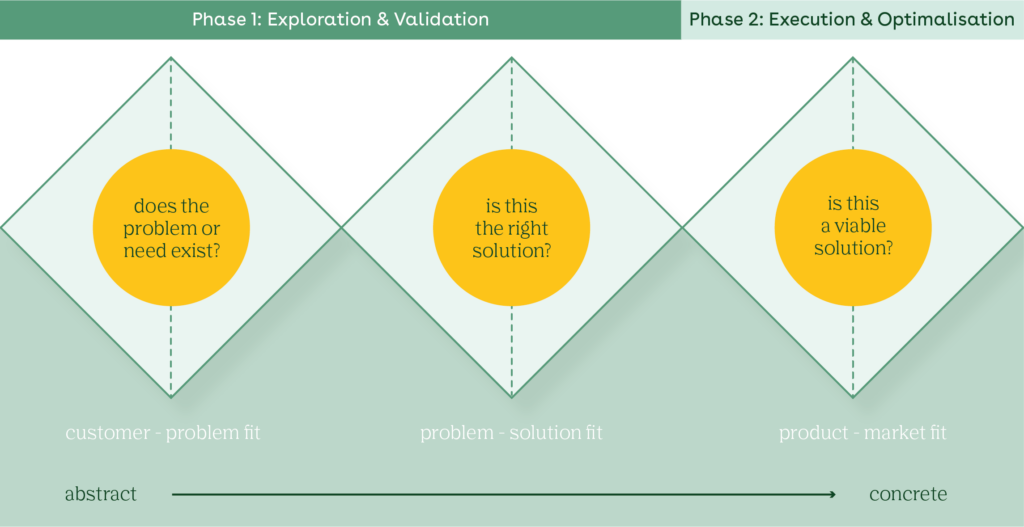
how to identify and prioritize assumptions
We distinguish three categories for assumptions:
- Desirability: Is this something the user wants? Does this concept solve the problem?
- Feasibility: Is it technically feasible? Can we organize this?
- Viability: Does it meet the business goals? Does the business model work? Will it be competitive?
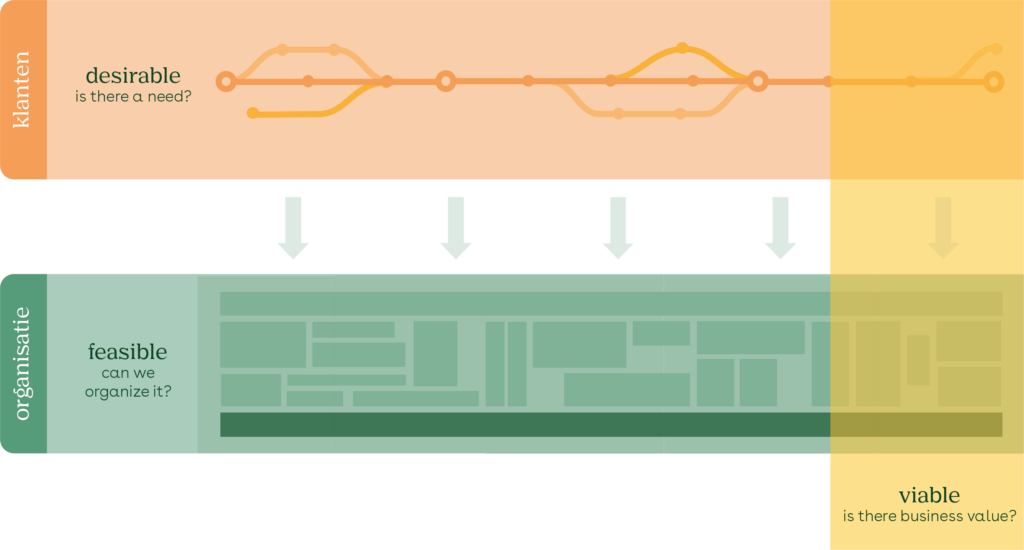
By testing the desirability of your idea, you place the customer central in your process. Feasibility mainly touches upon whether the organization has or can get the capabilities to bring this concept to life. Lastly, viability is primarily about finding out whether a sound business model can be created, combining both the customer and organization perspective.
A good way to start is to do an assumption mapping exercise by listing everything you think you know about the three topics. Useful tools to help you identify your assumptions are the Business Model Canvas and the Value Proposition Canvas.
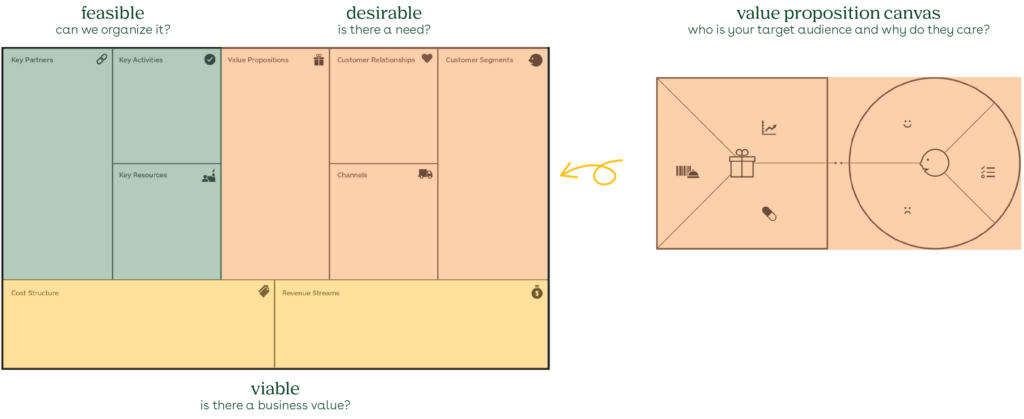
Continue by making a box plot of your assumptions in terms of importance (for them to be true) and the level of confidence / proof you have on them. Your riskiest assumptions will be the important ones for which you do not have any convincing evidence yet.
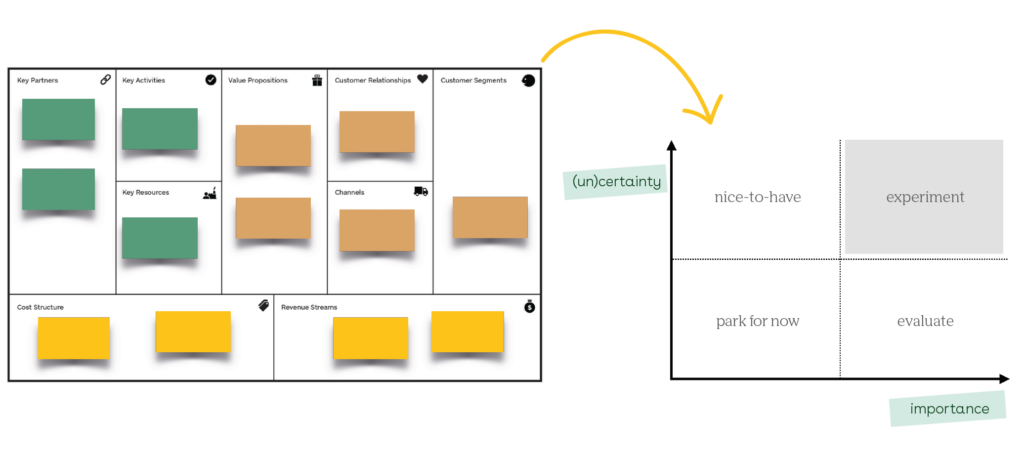
At Essense, we believe that it is essential to always start by validating assumptions related to desirability first. As Steve Blank, creator of the customer development method, stated: “No plan survives first contact with customers.” So pick your riskiest assumption and follow through by designing an experiment to test it.
design an experiment to test your assumption
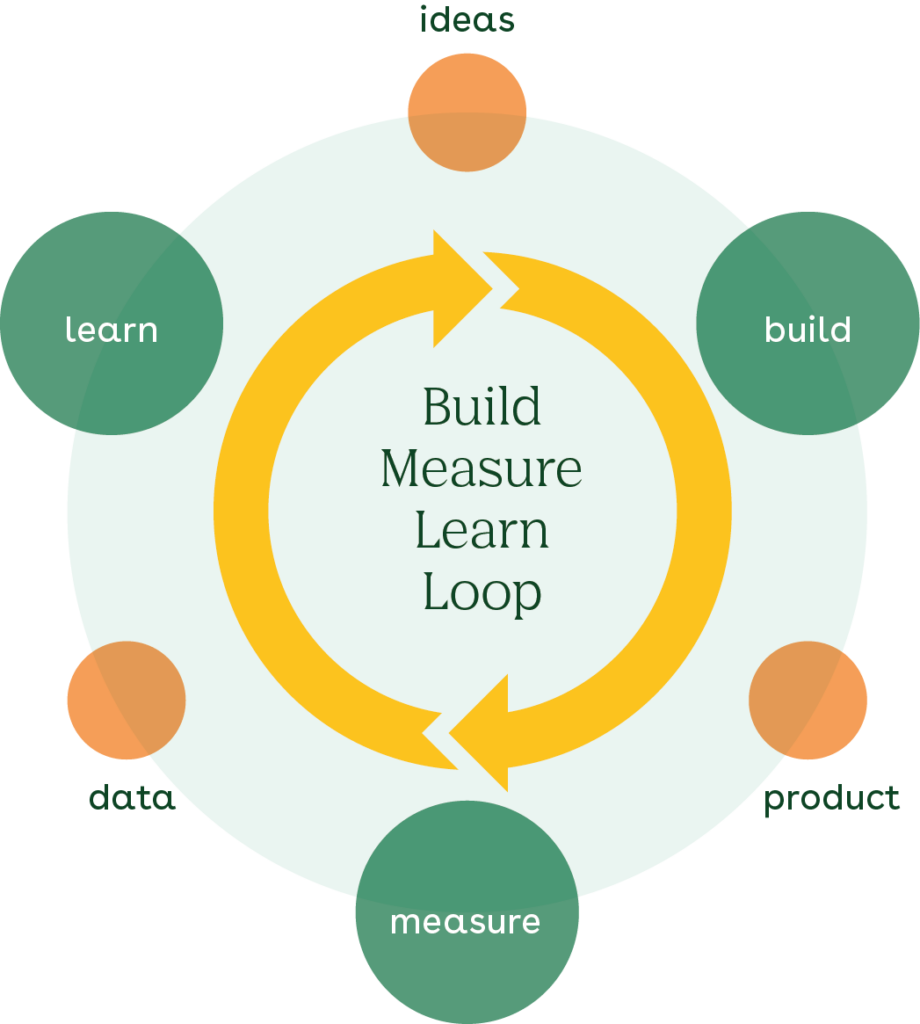
The experiment loop during concept testing consists of building a prototype which is then tested and its results are measured (data), from which we can learn. A prototype can be anything that will help you to validate your assumption – from a napkin sketch to a full blown clickable UI. However, the focus should be on fast and cheap learning by doing – so try to keep it simple and build only what you need. The newly gained insights can serve as input to generate new ideas or improvements, which can be built and tested in another cycle. Our experiment canvas provides a straightforward way to design well-defined experiments around your assumption in order to quickly run through the Build-Measure-Learn cycle.
The setup of your experiment should be in service of your learning goal. So start by formulating a clear learning objective or hypothesis first, and then try to work back what you need to test it. Think about what data provides insight into your learning goal and how you can start to collect this. After running your experiment, start to evaluate your results and draw your conclusions.
The results may lead to new assumptions or can serve as input to pivot or persevere your concept. This way, the concept can be fine tuned to fit both the customer’s needs as the business goals. Again, especially in the early stages, remember it’s about prospecting where (not) to dig for gold, not to hit the motherload at the first try.
the right mindset
Working customer-centric and gathering customer feedback can de-risk the development process. However, this is no guarantee that your concept will be a success. Within concept development, encountering failure is bound to happen at some point. Luckily, trying to fail is actually something we encourage. Failures are very valuable when the correct answer is not known beforehand and exploration is needed in a situation that was never encountered before. Learning about the flaws in your idea early on will enable you to easily change your plans accordingly. The anti-failure bias slows down the innovation process.
Secondly, the idea you are working on might be something you would like to succeed. This confirmation bias can be characterized by mainly searching for evidence confirming you are on the right track, while ignoring other signs that refute your idea. It is not without reason that an often heard advice in the design industry is: ‘Kill your darlings’.
putting concept testing into practice
Running experiments requires some skill and know-how, but more importantly the right mindset: fail fast, learn faster. If you would like a one-on-one with one of our experts or an in-company training, please view the options here or contact us directly. We are more than happy to think along with you how to not let your business idea be part of that 75-95% failure rate statistic 😉






